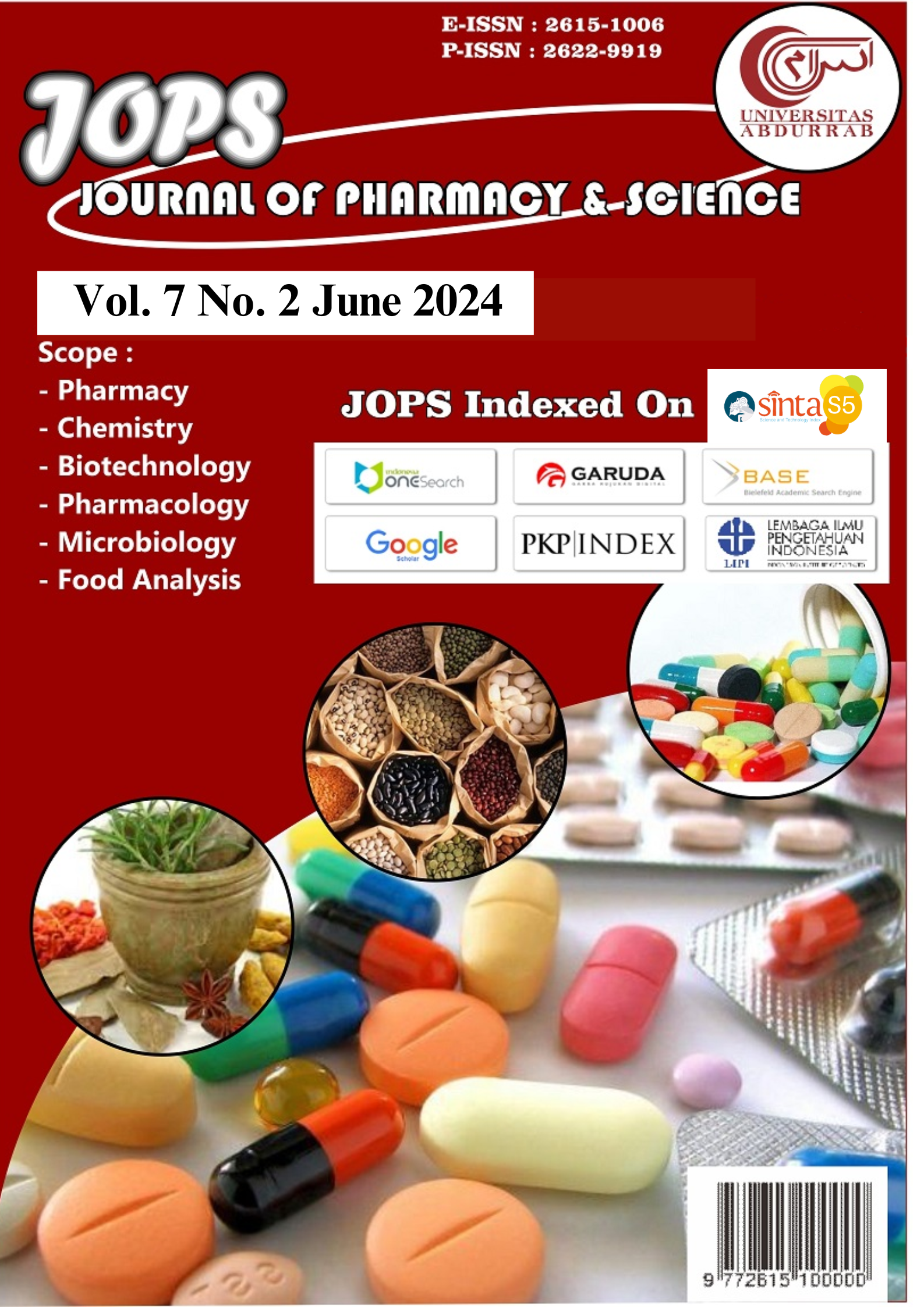Skrining Fitokimia Dan Uji Aktivitas Antioksidan Ekstrak Etanol Kunyit Hitam (curcuma caesia Roxb) Dengan Metode DPPH (1,1 diphenyl-2-picrylhydrazyl)
DOI:
https://doi.org/10.36341/jops.v7i2.4739Keywords:
Curcuma caesia Roxb, Antioxidant, ascorbat acid, DPPHAbstract
Black turmeric (Curcuma caesia Roxb) comes from the Zingberaceae family and is one of the natural antioxidant plants capable of combating free radicals. This study aims to determine the secondary metabolite compounds and antioxidant activity test of black turmeric ethanol extract. Extraction was carried out using 96% ethanol solvent by maceration method, secondary metabolite analysis by phytochemical screening method, and antioxidant activity test using DPPH (1,1 diphenyl-2-picrylhydrazyl) method with ascorbic acid as a comparator. The instrument used was a microplate reader with a maximum measurement wavelength of 520 nm. The parameter used to determine antioxidant activity is IC50 (Inhibition concentration). In this study, the results of phytochemical screening test on black turmeric positively contained alkaloids, flavonoids, tannins, saponins, steroids, and triterpenoids. The antioxidant activity test results of black turmeric ethanol extract (Curcuma caesia Roxb) as a sample obtained an IC50 value of 124.33 ppm, while ascorbic acid as a comparator had an IC50 value of 2.49 ppm. Based on these IC50 values, black turmeric ethanol extract has moderate antioxidant activity and ascorbic acid has very strong activity.
Downloads
Downloads
Published
How to Cite
Issue
Section
License
1. Copyright of all journal manuscripts is held by the JOPS (Journal Of Pharmacy and Science)
2. Formal legal provisions to access digital articles of electronic journal are subject to the provision of the Creative Commons Attribution-ShareAlike license (CC BY-NC-SA), which means that JOPS (Journal Of Pharmacy and Science) is rightful to keep, transfer media/format, manage in the form of databases, maintain, and publish articles.
3. Published manuscripts both printed and electronic are open access for educational, research, and library purposes. Additiponally, the editorial board is not responsible for any violations of copyright law.
licensed under a Creative Commons Attribution-ShareAlike 4.0 International License.










